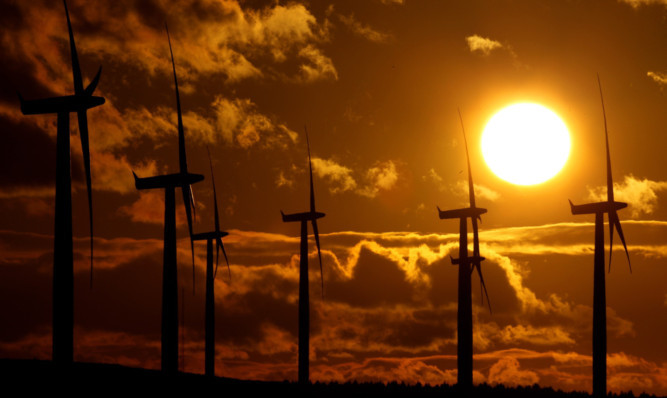At least three in five people would support large windfarms in their communities, according to a poll comissioned by Scottish Renewables.
Around two-thirds (69%) say their decision to visit an area of Scotland would not be affected by the presence of a windfarm, the YouGov poll of more than 1,000 Scottish adults finds.
Support for wind power (62%) is around twice has high as support for local nuclear power plants (32%) and significantly higher than support for shale gas drilling (24%).
Four-fifths would support a large local hydro project, considerably more than other forms of energy generation such as gas (42%), oil (37%) and coal (34%).
The results have been published at the Scottish Renewables annual conference in Edinburgh.
The poll found three-quarters (76%) would prefer most of their electricity to come from low carbon sources.
Hydro is the most favoured source, followed by wind and solar, then nuclear. Fossil fuel received just 3% of the vote and shale gas just 1%.
Niall Stuart, chief executive of Scottish Renewables, said: “While this polling evidence doesn’t mean every renewable scheme proposed should be approved, it is important people bear this research in mind when debating the pros and cons of the differing choices Scotland could make to meet its future energy needs.
“It appears people recognise renewables plays to many of Scotland’s strengths, crucially, our outstanding natural resources and the long and proud legacy of our energy industries coal, then oil and gas and now renewables.
“I think people also understand we are delivering. Renewables generated more than a third of the electricity used in Scotland last year, supports more than 11,000 jobs and are helping to cut harmful carbon emissions.
“What other industry can help us tackle climate change while creating jobs and investment on the scale of our renewable energy industry?”
However, The Stop Highland Windfarms Campaign (SHWC) convener Pat Wells said: “More windfarms mean higher electricity bills for domestic consumers and industry.
“Windfarm developments are also affecting tourism despite (Energy Minister) Fergus Ewing’s assertion tourism and renewables can thrive together.
“However, the views of tourists are disregarded at the industry’s peril, as indicated by a petition started in America by regular visitors to Scotland who are dismayed at the reckless industrialisation of our landscape.”
